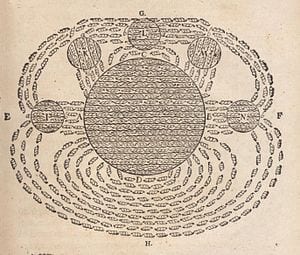What causes a magnet to be a magnet, and how can we control a magnet’s behavior? These are the questions that University at Buffalo researcher Igor Zutic, a theoretical physicist, has been exploring over many years.
He is one of many scientists who believe that magnets could revolutionize computing, forming the basis of high-capacity and low-energy memory, data storage and data transfer devices.
In a recent commentary in Science, Zutic and fellow UB physicist John Cerne, who studies magnetism experimentally, discuss an exciting advancement: A study by Japanese scientists showing that it is possible to turn a material’s magnetism on and off at room temperature.
A material’s magnetism is determined by a property all electrons possess: something called “spin.” Electrons can have an “up” or “down” spin, and a material is magnetic when most of its electrons possess the same spin. Individual spins are akin to tiny bar magnets, which have north and south poles.
In the Japanese study, which also appears in the current issue of Science, a team led by researchers at Tohoku University added cobalt to titanium dioxide, a nonmagnetic semiconductor, to create a new material that, like a chameleon, can transform from a paramagnet (a nonmagnetic material) to a ferromagnet (a magnetic material) at room temperature.
To achieve change, the researchers applied an electric voltage to the material, exposing the material to extra electrons. As Zutic and Cerne explain in their commentary, these additional electrons — called “carriers” — are mobile and convey information between fixed cobalt ions that causes the spins of the cobalt electrons to align in one direction.
In an interview, Zutic calls the ability to switch a magnet “on” or “off” revolutionary. He explains the promise of magnet- or spin-based computing technology — called “spintronics” — by contrasting it with conventional electronics.
Modern, electronic gadgets record and read data as a blueprint of ones and zeros that are represented, in circuits, by the presence or absence of electrons. Processing information requires moving electrons, which consumes energy and produces heat.
Spintronic gadgets, in contrast, store and process data by exploiting electrons’ “up” and “down” spins, which can stand for the ones and zeros devices read. Future energy-saving improvements in data processing could include devices that process information by “flipping” spin instead of shuttling electrons around.
In their Science commentary, Zutic and Cerne write that chameleon magnets could “help us make more versatile transistors and bring us closer to the seamless integration of memory and logic by providing smart hardware that can be dynamically reprogrammed for optimal performance of a specific task.”
“Large applied magnetic fields can enforce the spin alignment in semiconductor transistors,” they write. “With chameleon magnets, such alignment would be tunable and would require no magnetic field and could revolutionize the role ferromagnets play in technology.”









